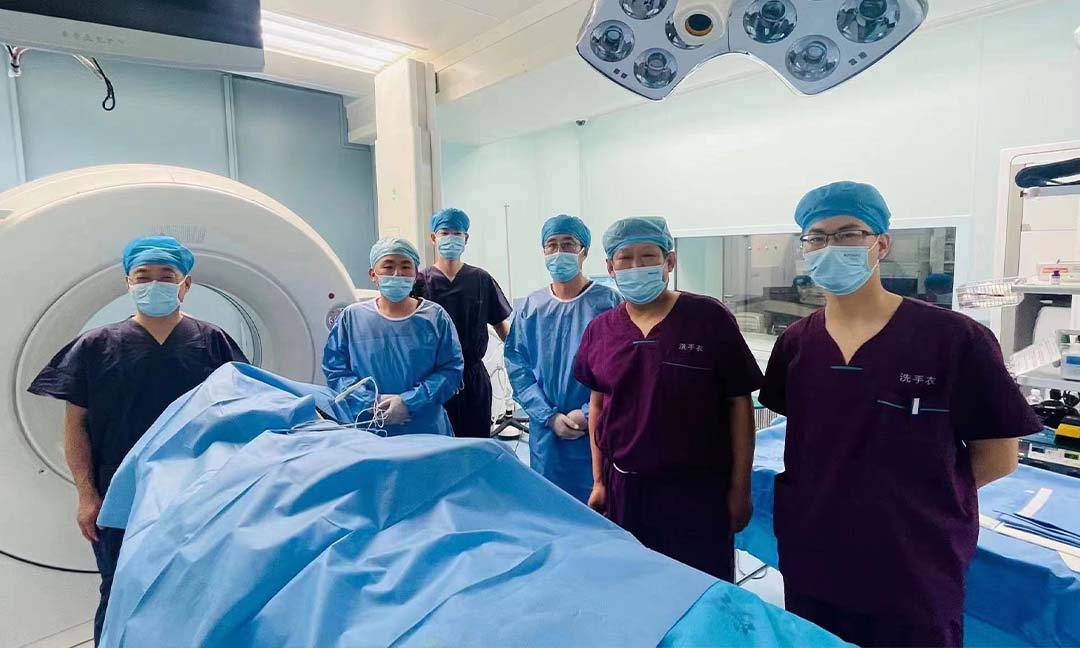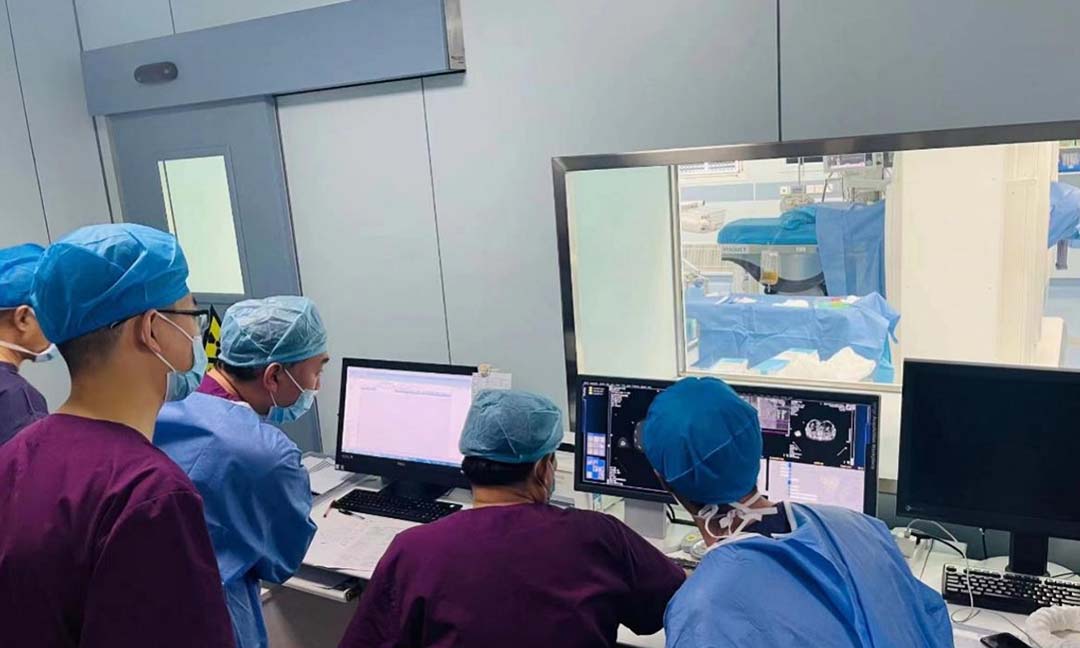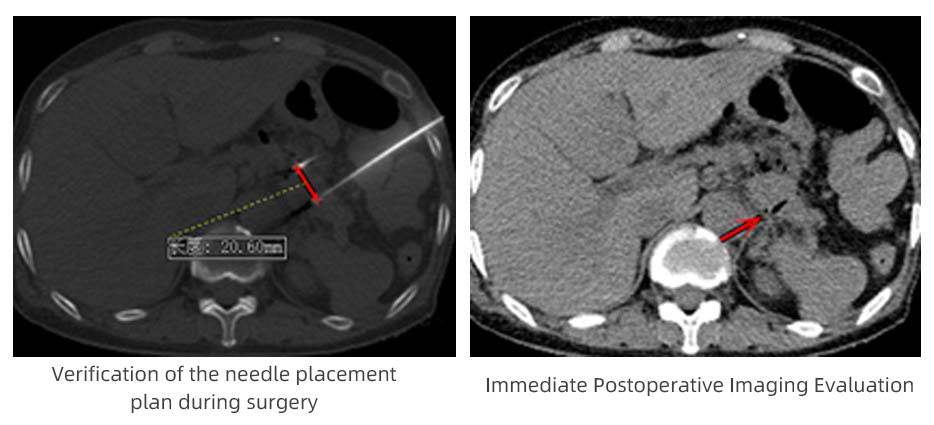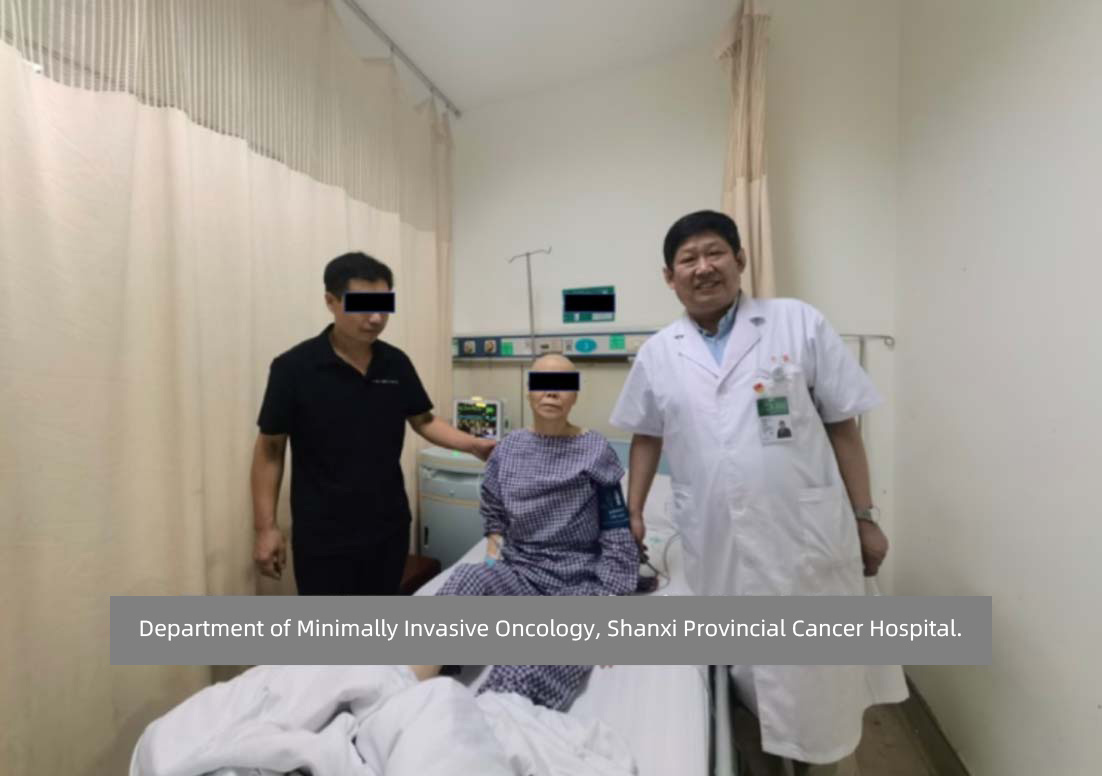

On July 5, 2022, Professor Ye Xin from the Minimally Invasive Oncology Department of Qianfoshan Hospital in Shandong Province led a team to successfully perform irreversible electric perforation ablation treatment on a patient with advanced malignant abdominal tumors. The "domestic nano-knife" used in the surgery was independently developed and produced by Alpmed - High Voltage Steep Pulse Minimally Invasive Therapeutic System.


The patient is an elderly woman diagnosed with poorly differentiated adenocarcinoma of the pancreas with multiple liver metastases for over six months (stage IV cT4N1M1). After multiple cycles of chemotherapy combined with immunotherapy and targeted therapy, the liver lesions stabilized, but the tumor in the body and tail of the pancreas continued to grow, accompanied by worsening lower back pain. After multidisciplinary expert discussions, a pancreatic tumor nano-knife treatment plan was developed to relieve local symptoms and improve the patient's quality of life. Subsequent treatment can continue to be combined with chemotherapy, immunotherapy, targeted therapy, and other treatments to control the disease and prolong survival.
The surgery officially began at 4 pm. Professor Ye Xin designed the needle path based on the imaging data and performed percutaneous puncture under CT guidance. A 15cm nano-knife ablation electrode needle was used, with a 10mm exposed electrode needle tip. The double needles were inserted parallel to each other, with a needle distance of 2cm, and the needle tips reached the edge of the lesion. During the operation, the ablation voltage was set to 3000V, the pulse width was 90us, and each group was ablated 10 times, with a total of 15 groups of ablation. The needle was retracted by 10mm, and the same conditions were used to perform another 15 groups of ablation. After the surgery, the needle was removed, and CT scanning showed no bleeding, indicating that the ablation was completed.


The postoperative patient's condition is good, and they reported that the symptoms of back pain have significantly improved.
Professor Ye Xin stated that the ablation surgery went very smoothly and highly recognized the "domestic Nanoknife" used in the treatment. Professor Ye said, "As a new minimally invasive ablation technology for tumors, the selective ablation feature of the Nanoknife can fully inactivate tumor cells while protecting important tissue structures such as large blood vessels, gallbladder, bile ducts, ureters, nerves, etc. near the tumor. It is particularly suitable for the ablation treatment of complex and difficult-to-treat malignant tumors invading the pancreas, bile ducts, etc. The High Voltage Steep Pulse Minimally Invasive Therapeutic System used in this treatment has good advantages in both energy field stability and real-time parameter monitoring. Currently, some medical centers in China have gradually applied the pulse ablation technology to clinical practice. It is hoped that more and more doctors will pay attention to the application of the Nanoknife in the field of malignant tumor treatment in the future, creating new opportunities for tumor patients."

|
Ye Xin Chief Physician, Second Professor Doctoral student/postdoctoral supervisor National "May Day Labor Medal" recipient The fourth honorary title of "National Famous Doctor - Excellence in Construction" in China Deputy Director of Tumor Ablation Therapy Committee of China Anti-Cancer Association Honorary Director of Minimally Invasive Lung Cancer Treatment Sub-committee of China Anti-Cancer Association Chairman of Lung Tumor Group of Tumor Ablation Expert Group of Chinese Physicians Association Vice Chairman of the Ablation Committee of the Interventional Branch of the Chinese Physicians Association Chairman-elect of the Expert Committee on Tumor Ablation of the Chinese Society of Clinical Oncology (CSCO) Deputy Director of the Committee of Respiratory Intervention of the Radiology Branch of the Chinese Medical Association Deputy Director of the Committee of Minimally Invasive Tumor Treatment of Chinese Physicians Association Deputy Director of the Tumor Intervention Committee of the Chinese Society of Research Hospitals Vice Chairman of Shandong Anti-Cancer Association Director of Shandong Anti-Cancer Association Tumor Clinical Collaboration Branch Honorary Director of Shandong Physicians Association Tumor Intervention Branch Vice Chairman of Shandong Medical Association Oncology Branch Deputy Director of Shandong Medical Association, Comprehensive Intervention Branch Vice Chairman of Shandong Physicians Association, Comprehensive Intervention Branch 《Journal of Cancer Research and Therapeutics(SCI)》中国主编 Editor-in-Chief of the Journal of Cancer Research and Therapeutics (SCI) in China. For nearly 40 years, he has been engaged in clinical, scientific research, and teaching work related to tumors. They were the first in China and internationally to carry out work on microwave/radiofrequency ablation for early-stage lung cancer and ground-glass opacity (GGO) nodules in the lungs, achieving an international leading level. They are a renowned expert in minimally invasive tumor treatment in China. They led the development of the world's first expert consensus on thermal ablation for sub-solid nodules in the lungs and the first domestic expert consensus on thermal ablation for lung tumors. In recent years, they have published over 100 papers in domestic and international core journals (including over 60 SCI papers with a cumulative impact factor of over 150), edited four monographs, and translated one monograph. They have undertaken four research projects funded by the National Natural Science Foundation of China, the former Ministry of Health, and the Shandong Provincial Science and Technology Department, and have won one third prize for scientific and technological progress in Shandong Province. |